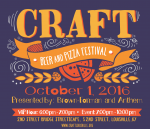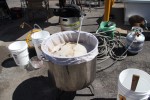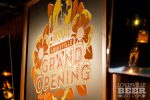My friend Joe behind the counter, circa 1987 (author’s photo)
There used to be a package liquor store called Scoreboard Liquors on West Spring Street in downtown New Albany. I worked there part-time from 1982 through 1988, when the store moved to a different location, a couple of miles uptown. In fact, I continued to work at Scoreboard after the move, but to tell the truth, it was never the same as at the old downtown location.
Scoreboard’s downtown building directly faced the federal courthouse, and it was within spitting distance of numerous bankers, lawyers, title abstractors and others performing their time-honored roles amid the daily antics of a county seat in seemingly terminal decline. For a lad from Georgetown, working the package liquor trade in the core of the historic business district was both a kick and an education.
Surely the 1940’s-era structure was the ugliest in all of downtown. Frumpily tacked onto its backside was the infamous (trust me) Cadillac Lanes bowling alley, run by a fractious family of immigrants from Pittsburgh eligible for reality television long before the genre was invented. In olden times, the cobbled together retail space out front had hosted an upscale automobile dealership.
Needless to say, those days were long gone, even then.
The barren north side of Cadillac Lanes faced a gravel parking lot separating it from Elm Street, and it became known among liquor store employees, in purely figurative terms, that to be taken “out behind the bowling alley” meant to be stood against the otherwise useless concrete block wall and shot for crimes against humanity. In retrospect, this reference seems tactless, but it was used quite often, especially in conjunction with obnoxious, drunken customers – particularly those employed by the auto dealership down the street.
I worked two or three nights a week, Saturday afternoons and the occasional day shift. The job was good, my pay was hard cash, and included as part of the deal were discounts on merchandise (where most of my paycheck naturally landed). My early travels were plotted from behind the store’s worn Formica counter, using paper, pens and actual books.
Nowadays, whenever I spot a package store clerk with eyes glued to an iPhone or laptop, I think back to my entertainment options on slow business nights: A miniscule black and white television set with rabbit ears, from which many a McNeil-Lehrer News Hour was observed. I probably should have been sweeping or stocking, anyway.
Package stores of Scoreboard’s socioeconomic ilk still are a trip, and an ongoing psychological experiment. During my long-ago tenure, insights into the human condition were plentiful, and sometimes fairly hard to stomach.
At least the owners indulged my interest in imported beers (craft beer had not yet come into existence), and they allowed me to purchase and stock options beyond the norm. I was given one walk-in door and a shelf outside it for warm bottles. We did a fairly good trade in imports, given their obscurity and the fact that whenever I wasn’t on site to explain what they were, consumer requests generally were greeted with a sneer by Duck, the manager: “Huh? I don’t drink that shit.”
After a few years, business downtown began declining, and the owners had few good options when the lease expired in 1988. Scoreboard’s relocation took place the same summer. I took a week off from my “real” job in Louisville to help move the store to affordable digs at the traffic-challenged corner of East Spring & Beharell. Few tears were shed by New Albany’s historic preservationists when the downtown building was hastily demolished to make way for a vacant lot, and a few years later, a bank still standing there today. The store itself changed ownership, and eventually was shuttered.
Three decades later, I think back to the downtown liquor store stalwarts, and sadly, quite a few of them have died, including Jim, the principal owner. More recently, Mamie and the School Marm both passed away. There was Norman and James Not Jim, the Canadian Club lady with all the books, and certainly numerous others. Their faces pass through my dreams on occasion, as though it had come time for a final round before closing.
Among the departed was Gin Lady, originally known to us as Mother Gargle, who usually walked to the liquor store from the East Bloc-designed senior citizen housing tower two short blocks away. As the day progressed and she stopped for the second or often third time, her red-dyed hair would become more and more unmanageable and frizzy. By late afternoon, her mop would be standing straight up, antenna-like, as though she’d jammed a finger into the power grid.
You see, the Seagram’s was never for her. It was for her gentleman friend, who perpetually called on her, but was never seen then or any other time. Neither was Gin Lady after the store moved across town.
Chemical Man was so dubbed for the spectacular lack of nutrients in his bloodstream, and my rigid certainty that the only thing keeping him alive was infusions of formaldehyde, Kessler whiskey and Sterling beer.
Early on, when I hadn’t come to understand the nuances of alcoholism, I asked Chemical Man why he bought three half-pints of Kessler at points throughout the day rather than a liter of whiskey first thing in the morning, which would be cheaper.
He sputtered indignantly that my college education had taught me absolutely nothing, because any fool knows that if you start the day with a big bottle, you’ll just go and drink it before lunch – and then what?
Later, Chemical Man grew too weak to carry the daily case of Sterling to his house, which fronted the side street fifty yards from the store’s front door. I’d carry it over and put it on the porch for him. A year or so later, his obituary was in the newspaper. I’d have bet money that he was 70, but he was only 59 at the time of his death.
Of all the people I met at Scoreboard, Snake was tops. For decades he kept a series of decrepit pick-up trucks alive just long enough to run a regular route through New Albany, collecting cardboard and taking it to Riverside Recycling for a few bucks, which went into the jar and paid for season tickets to Louisville Redbirds games.
Snake’s life wasn’t easy, but it could have been worse, and he generally kept a cheerful demeanor in the face of the curve balls thrown at him by fate. For example, the nickname came from a tattoo on his right arm, the one that ended just below the elbow, the rest having been removed after an accident decades earlier.
He had a recurring, acrimonious relationship with the New Albany Tribune, our local newspaper of record, and often vowed that if his wife died before him, he’d call to cancel the newspaper first — and only then ring the funeral home.
Snake worked hard as a bartender, and drank just as hard as a customer until swearing off the bottle in the early 1960’s. He never drank a drop again, ever. When the bartending jobs at New Albany’s neighborhood taverns dried up, Snake turned to cardboard full time, and occasionally filled a shift at the liquor store.
In 2001, Snake’s truck died for the final time, and since cardboard wasn’t paying squat, anyway, it was time for him to get out of it. He’d already decided that ballgames were too expensive and the club’s management too arrogant. A couple years later he stopped by my pub to chat, and it was the last time I ever saw him, for he died shortly thereafter on the day before my birthday.
There were others dear to me, like Gene, Tom and Louie, and I miss them all – the people, the store, and the time – but I miss Snake the most. Rest in peace, my friend. If you could see what’s become of the local newspaper these days, you just might reconsider that vow of sobriety.





